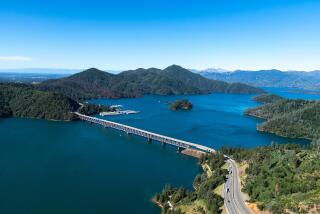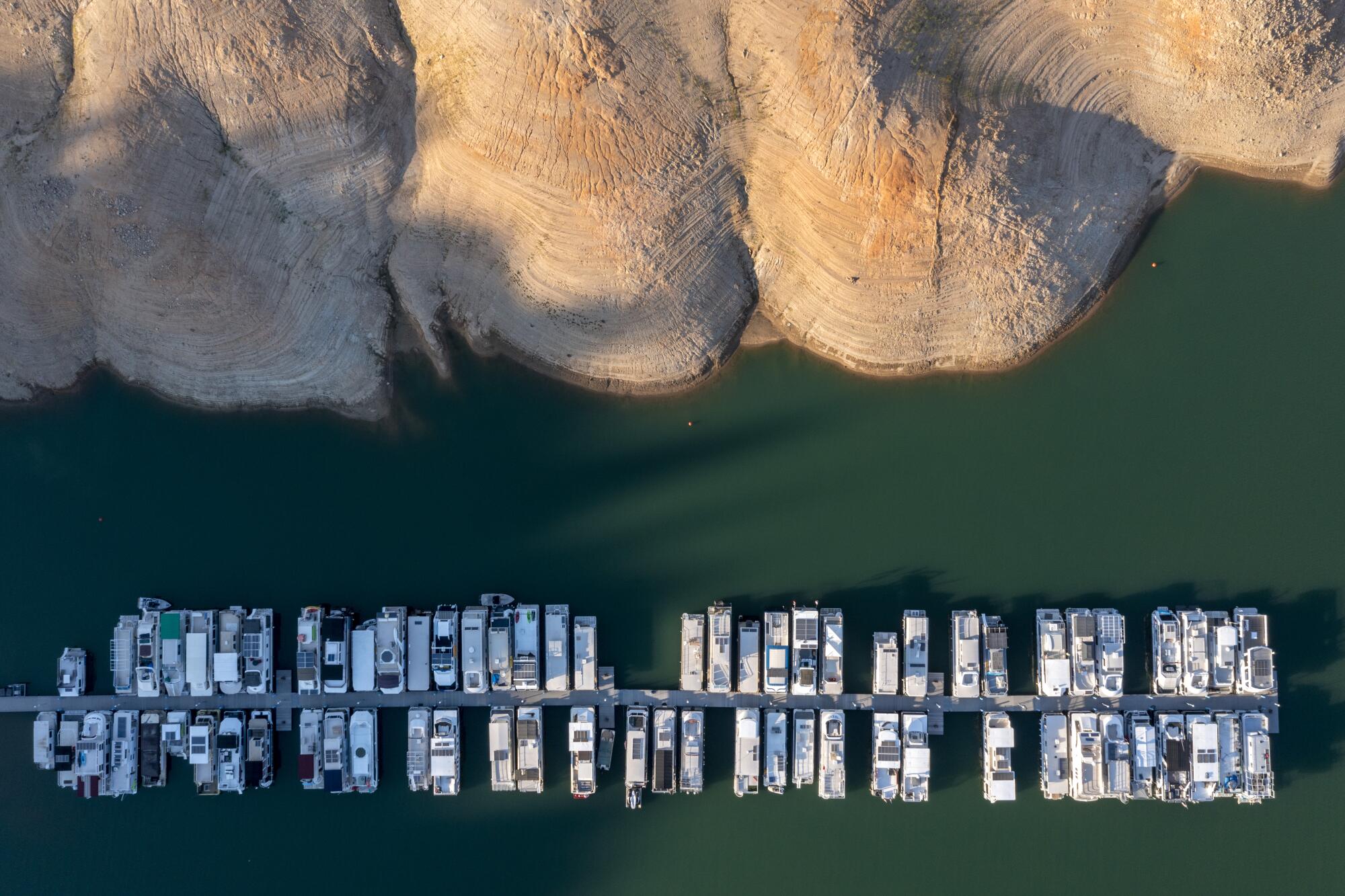
- Share via
Droughts are common in California, but this year’s is much hotter and drier than others, evaporating water more quickly from the reservoirs and the sparse Sierra Nevada snowpack that feeds them.
The state’s more than 1,500 reservoirs are 50% lower than they should be this time of year, according to Jay Lund, co-director of the Center for Watershed Sciences at UC Davis.
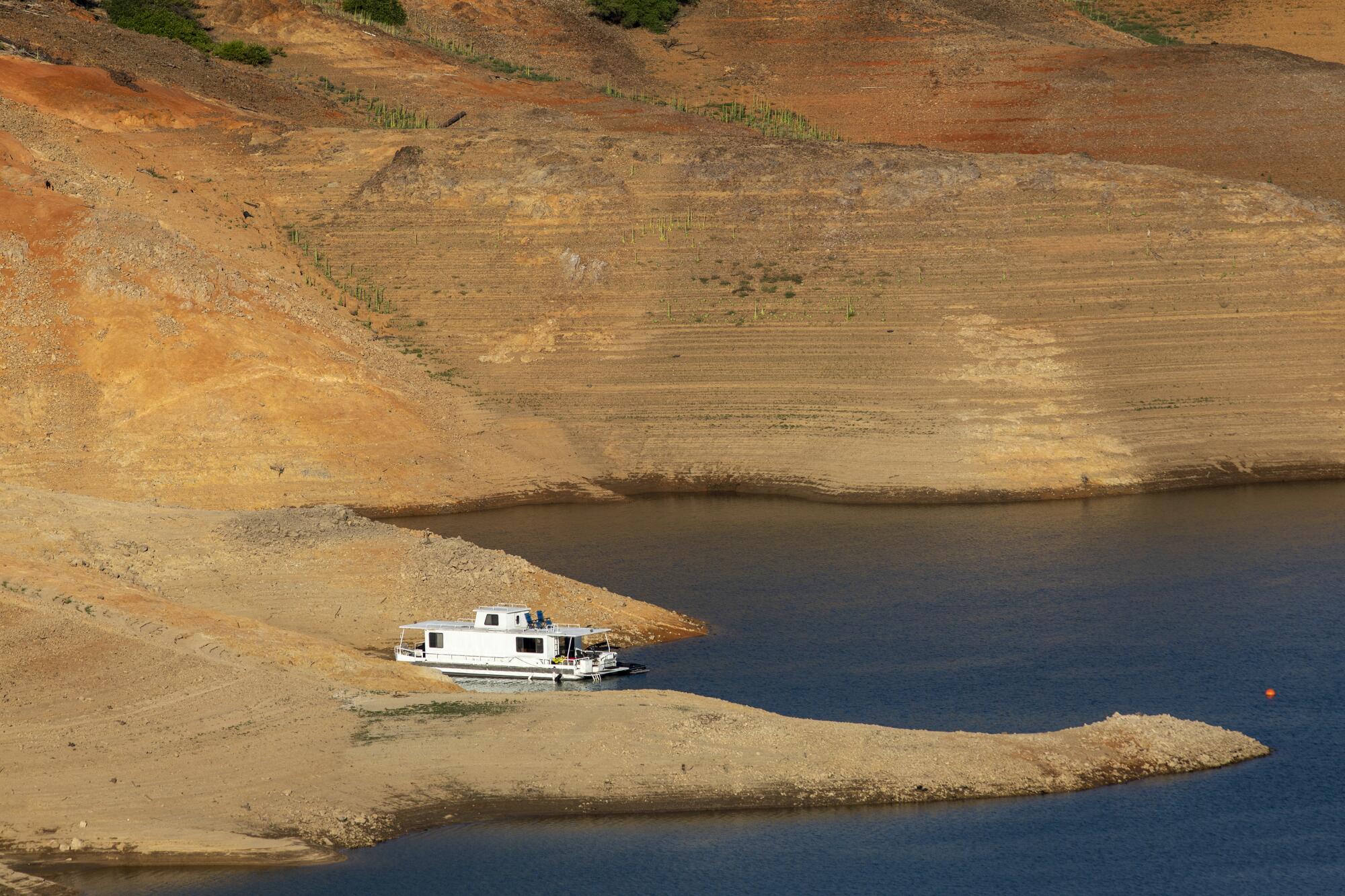
Last year was the third-driest on record in terms of precipitation. Temperatures hit triple digits in much of California over the Memorial Day weekend, earlier than expected. State officials were surprised earlier this year when about 500,000 acre feet of water they were expecting to flow into reservoirs never showed up. One acre-foot is enough water to supply up to two households for one year.
Currently Lake Shasta, the state’s largest surface water reservoir, is at 38% of capacity, according the the U.S. Bureau of Reclamation.
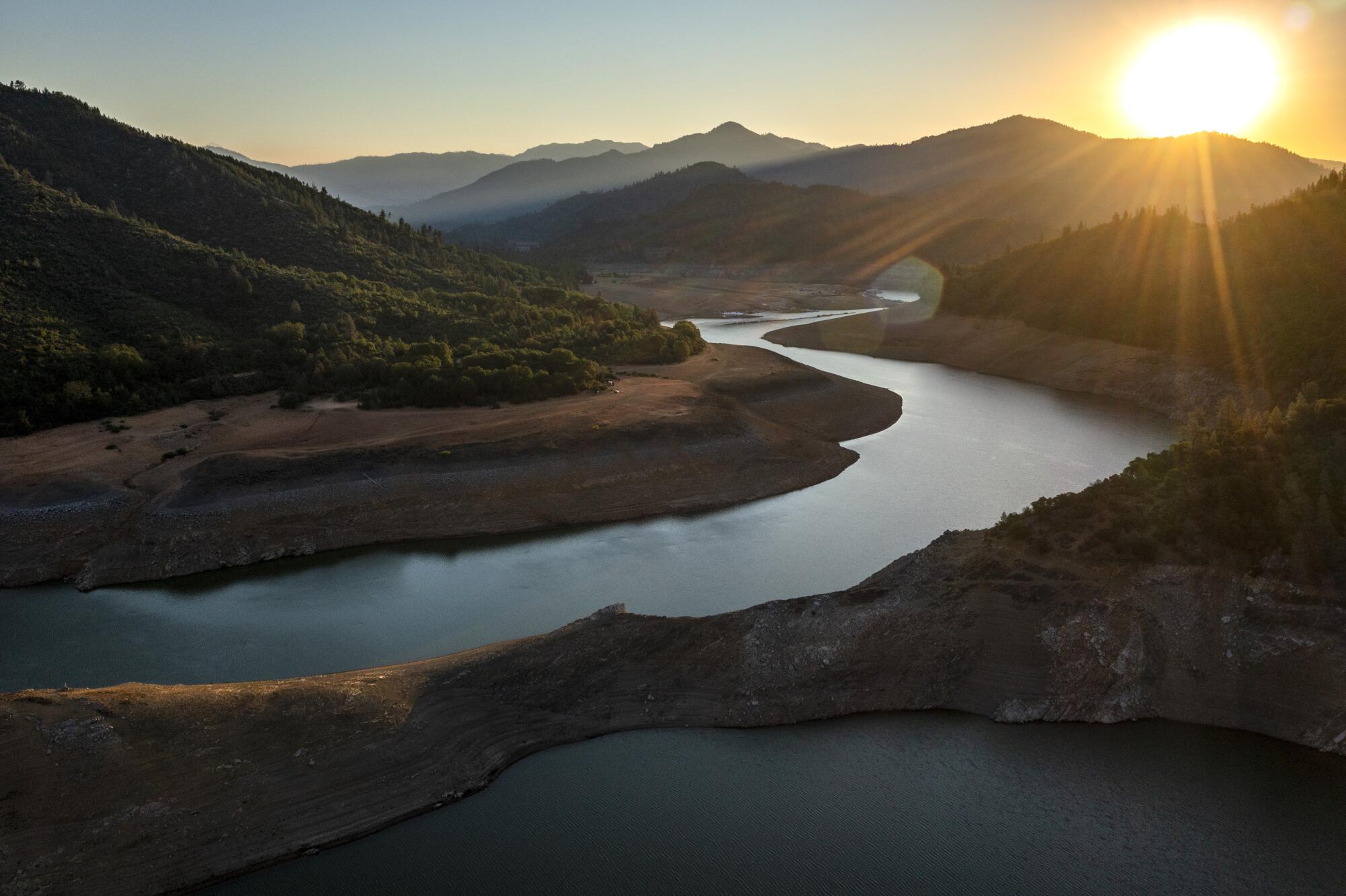
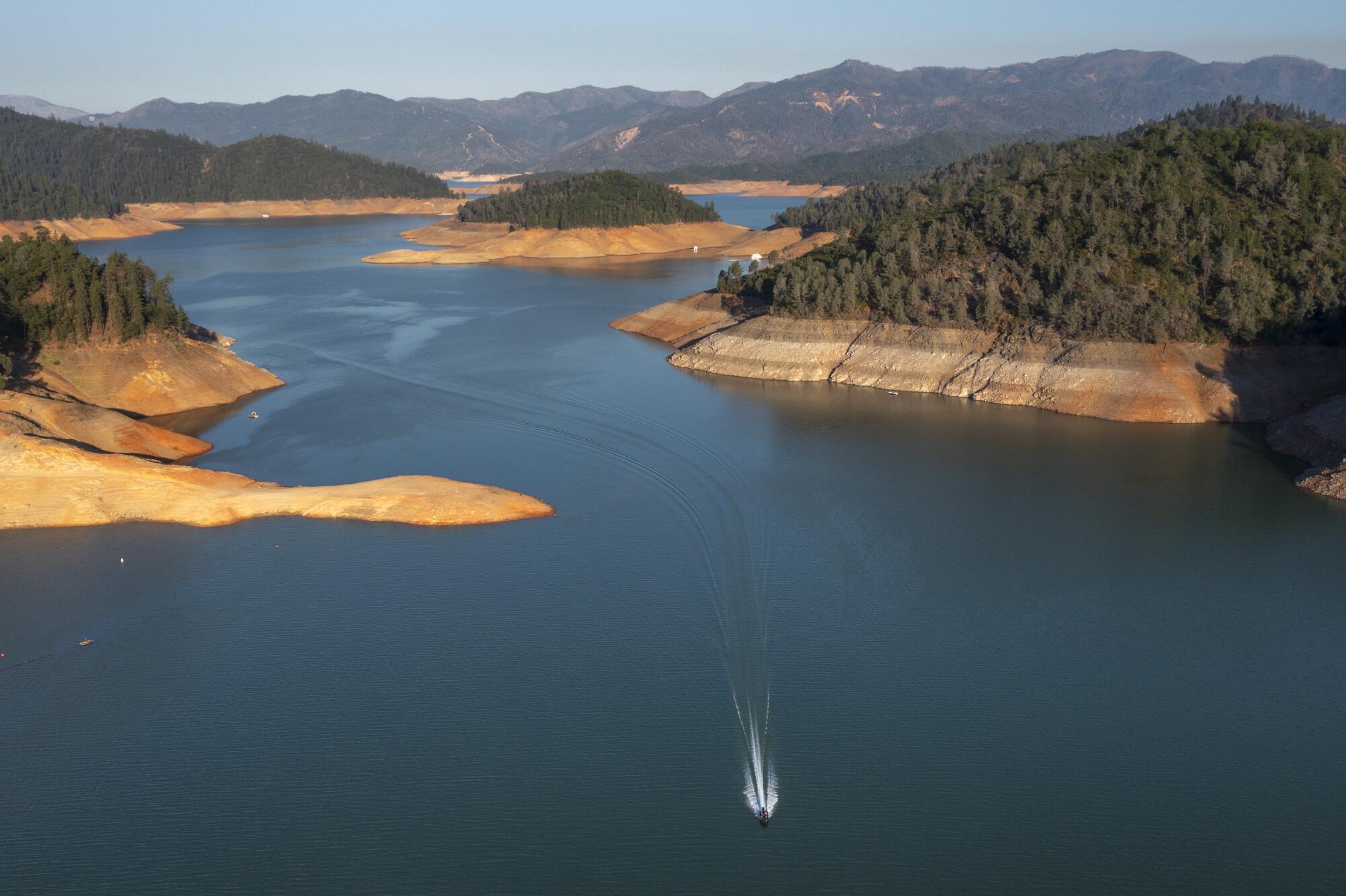
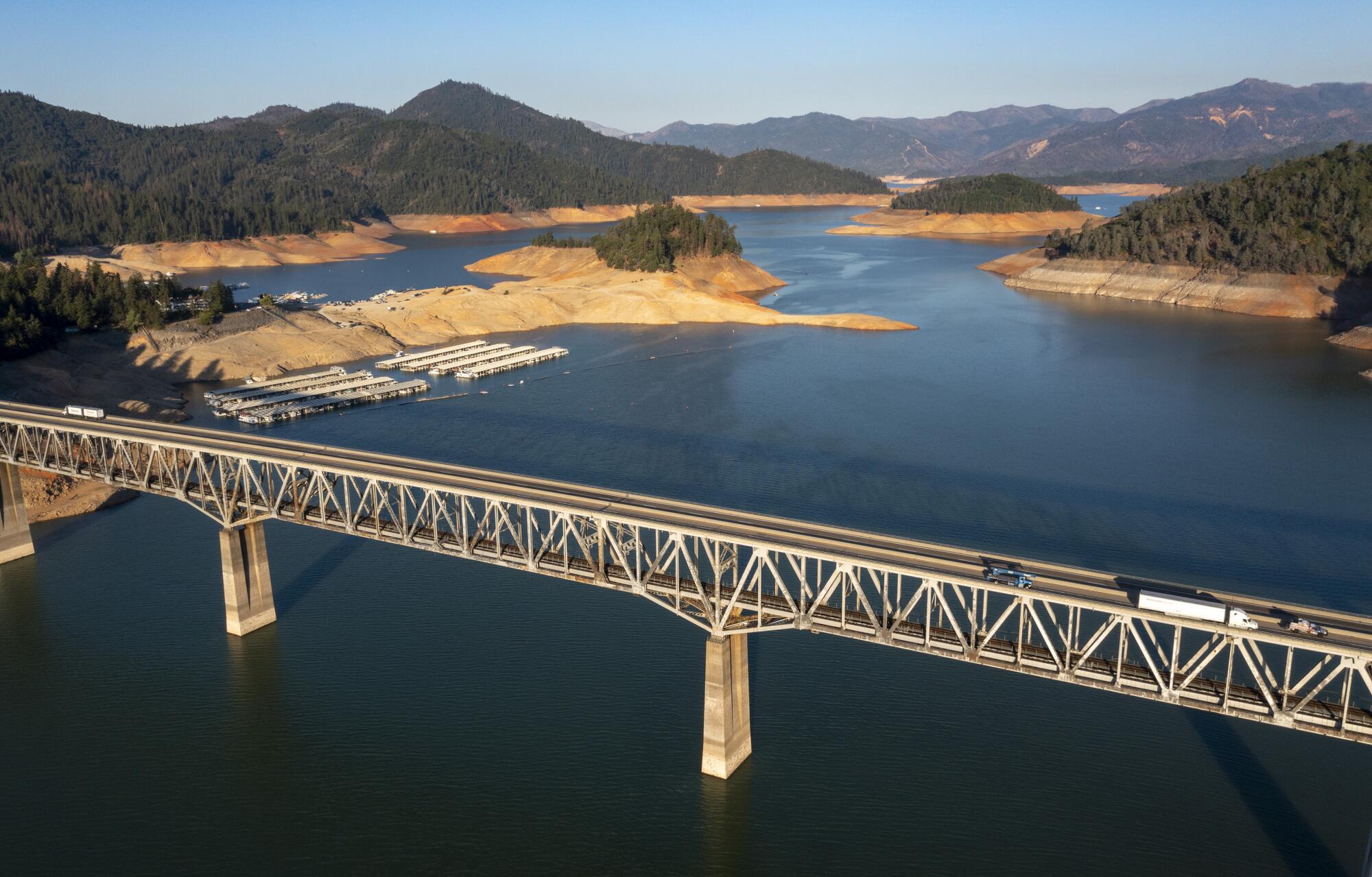
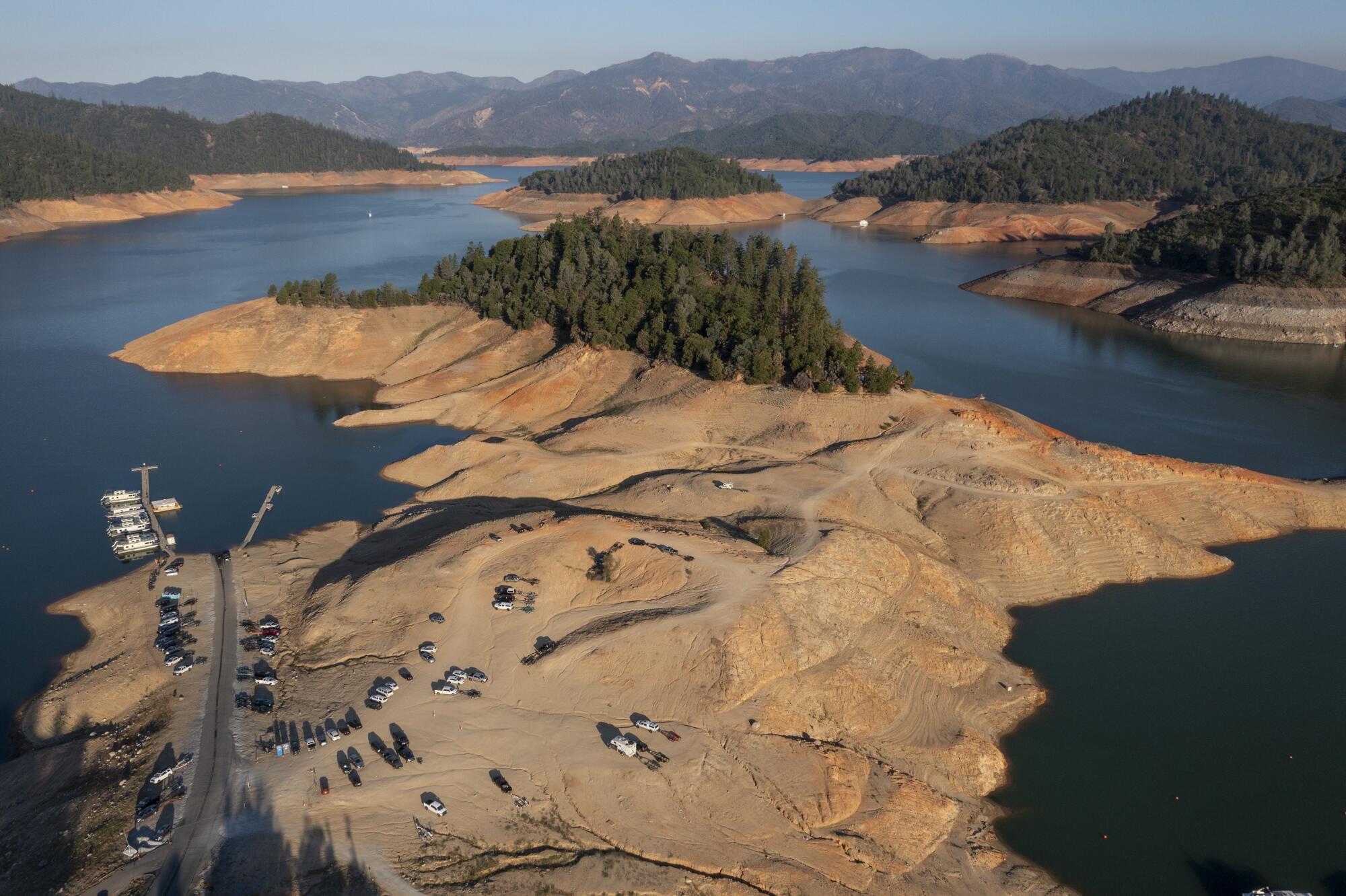
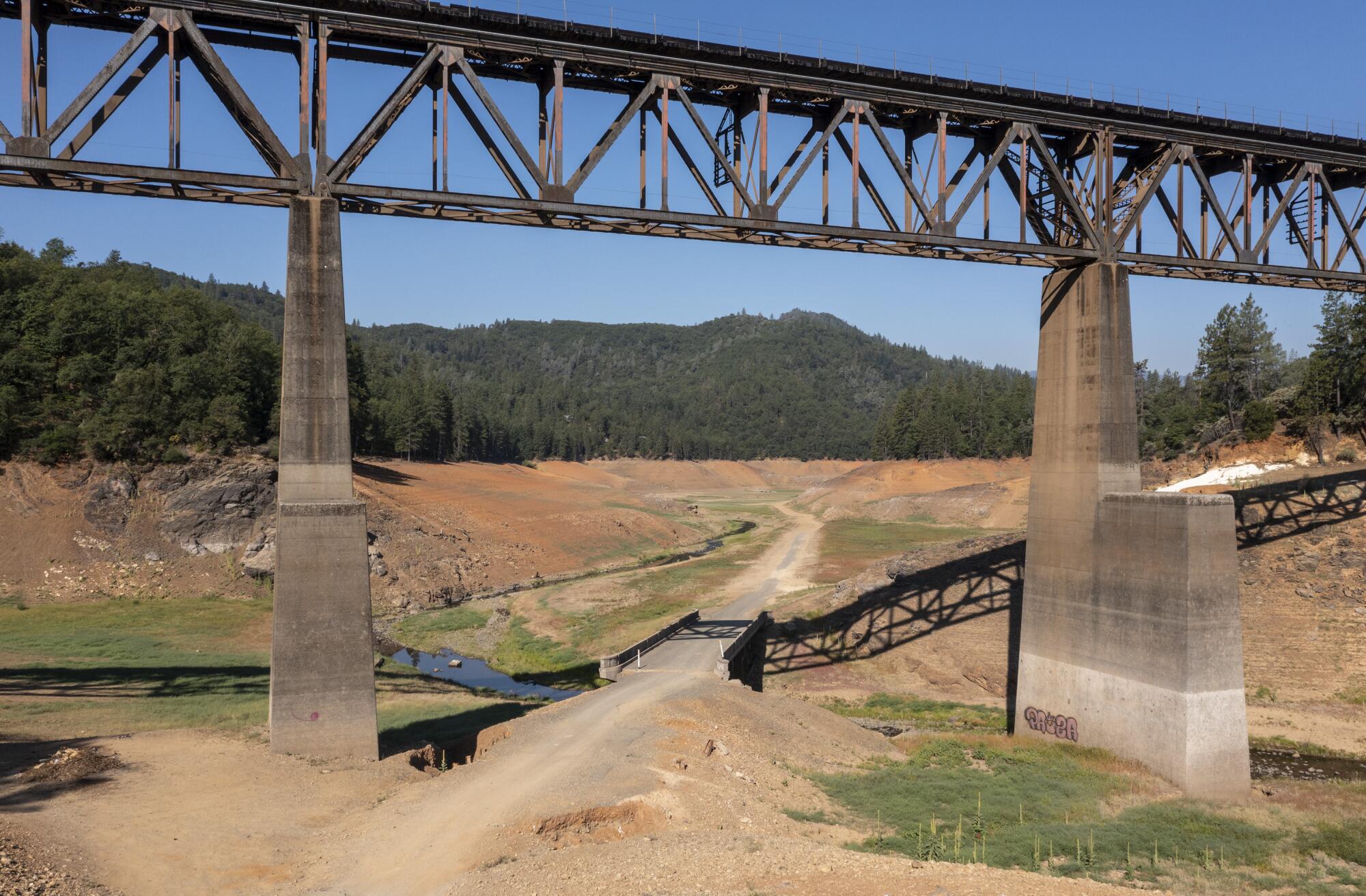
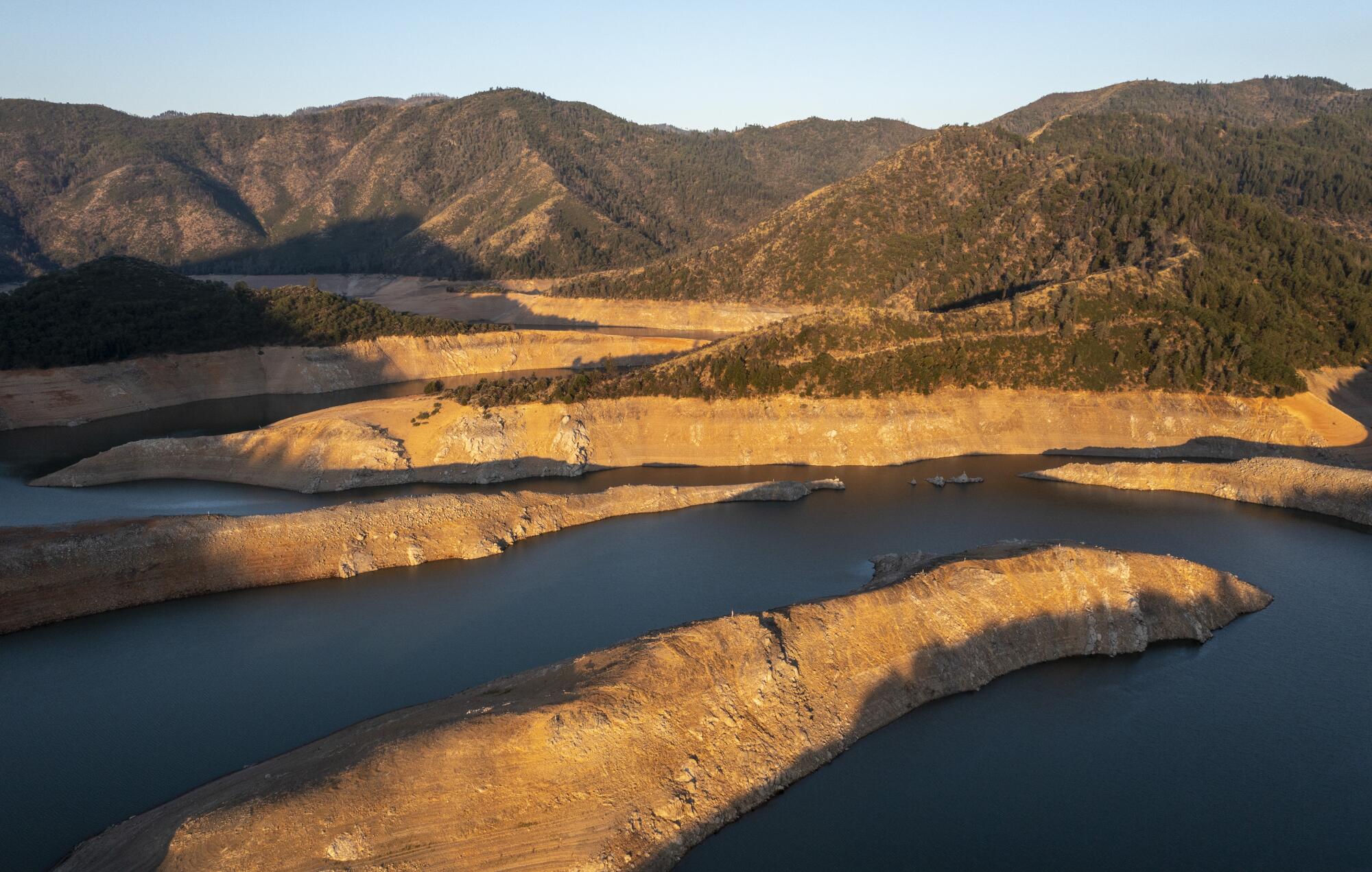
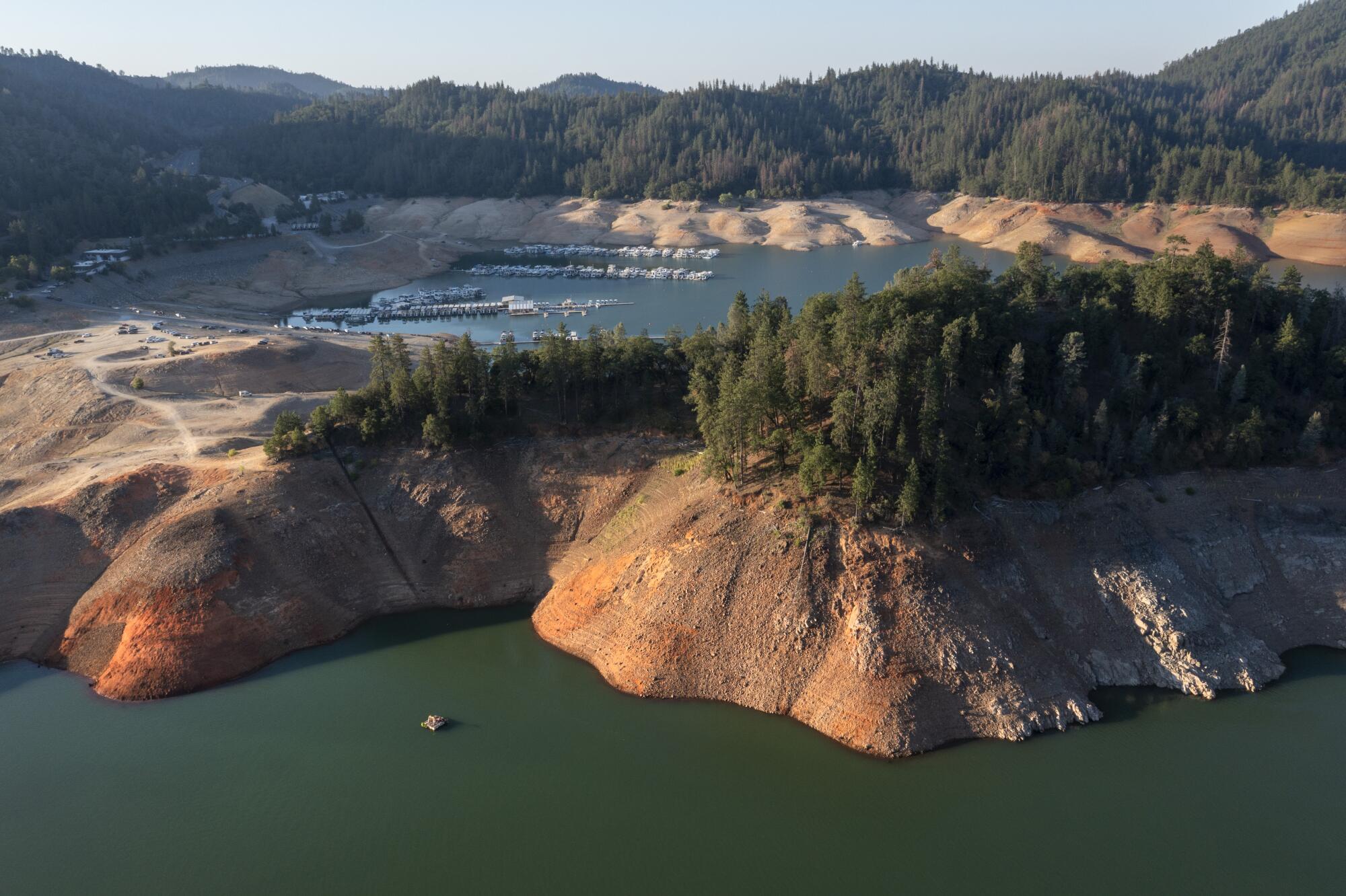
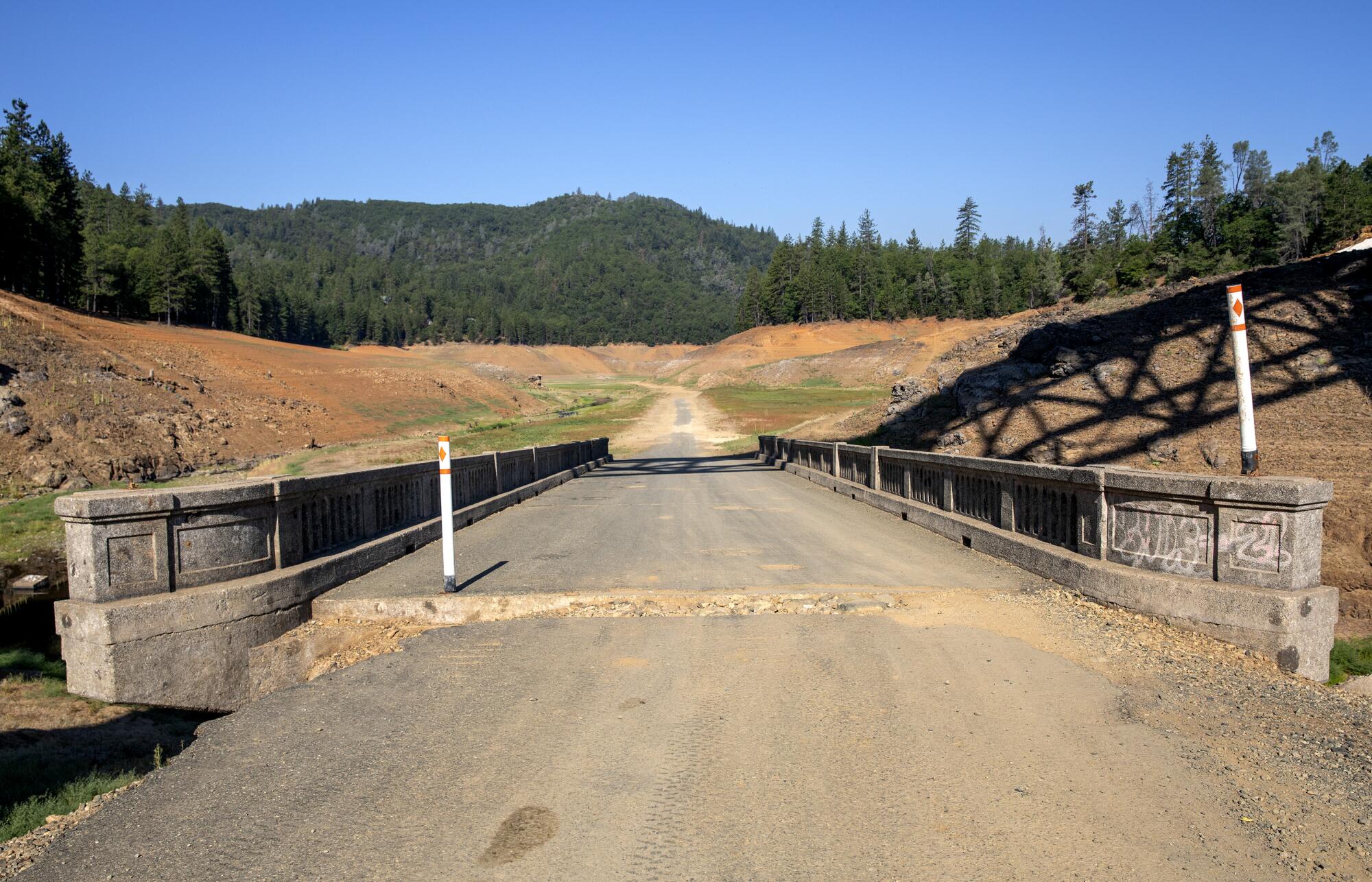
More to Read
Sign up for Essential California
The most important California stories and recommendations in your inbox every morning.
You may occasionally receive promotional content from the Los Angeles Times.

